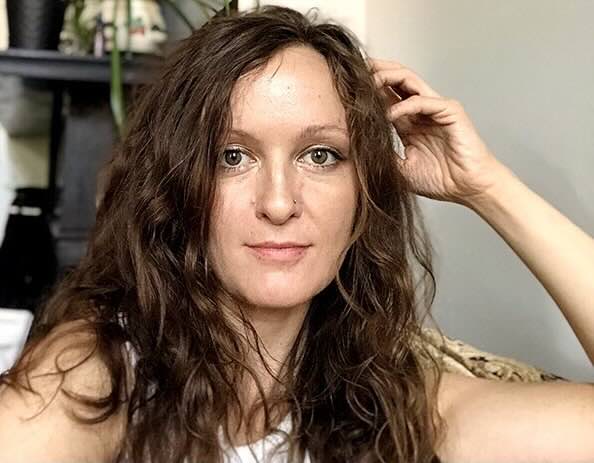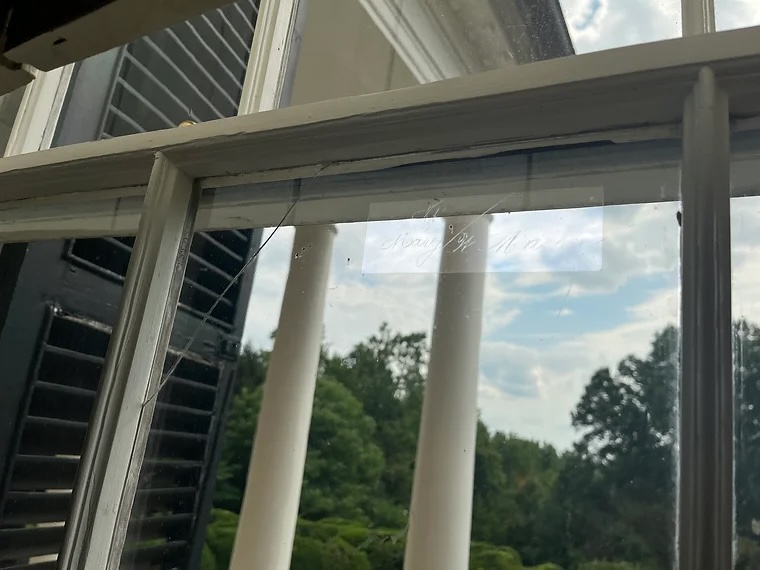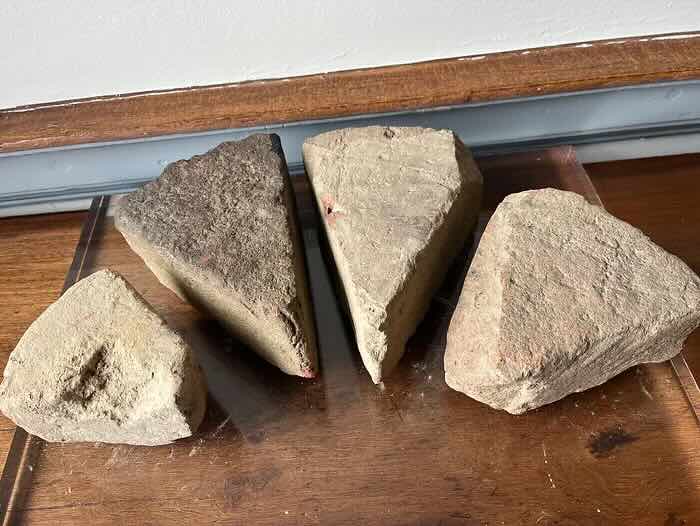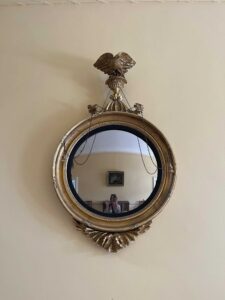Hear From the Residents
August 27, 2023
Summer Writer-In-Residence Ashlee Green: On legacies, tours, and textbooks: One week at Woodlawn
Ashlee Green is our fifth writer of the Summer 2023 cohort to spend a week onsite participating in our local residency program at Northern Virginia’s Woodlawn & Pope-Leighey House and Arcadia Center for Sustainable Food and Agriculture. Our summer writers-in-residence focus their weeks on-site exploring ways to rediscover and re-purpose place and place histories, and use writing as a means to build community, to bring awareness to critical social and environmental issues, and as a creative force of empowerment.
She/they is an MFA candidate in nonfiction writing at George Mason University. They have written for NPR, the Washington Independent Review of Books (WIRoB), HuffPost, and The Rumpus. Green was named a 2023 Cheuse Fellow and will spend the month of July in Norway and Iceland, researching Nordic bathing and sauna culture.
Legend has it that a woman named Mary W. Mason carved her name into the leaded-glass window in the Music Room of Woodlawn, the former plantation house where I’ve spent the last week writing, with the diamond from her engagement ring.
Mason’s association with Woodlawn isn’t clear, but she lived sometime during the late 1800s, post plantation; post-Civil War.
This etching with diamonds was, most likely, a common practice in Mason’s era. It’s theorized less as vandalism and more as “sentimental graffiti”; like “workmen signing their initials to the wooden frame of a structure before wall boards go up” in order to “leave an important piece of themselves.” The signature is given a regular spotlight on guided tours of Woodlawn, and it stuck out to me; got my wheels turning about the concept of a “legacy.”
If I walk out of the Music Room and past the adjacent central Hall, I’ll end up in the house’s former private Living Room, where a pile of wedge-shaped bricks is on display. The bricks were handmade by some of the 90-plus people who were enslaved on Woodlawn’s 2,000 acres of land in the first half of the 19th century. Brick making back then involved a lengthy process. First, red clay was harvested from the ground. Then, it was shaped, mostly by hand, into a wedge or rectangle and set out to dry in the sun. Finally, it was baked in a kiln. Some of the fingerprints from the people who made the bricks are still intact. Used to build the round columns on Woodlawn’s former front portico, the bricks were then plastered over.
The signature, and the bricks, are symbols of legacies. Sure, they’re from different time periods, but they still fuel a few of my central questions: Are these legacies based on playfulness or practicality? Rooted in autonomy or dependence? Can one be proud of labor performed while in captivity? Is sentimentality only accessible because it relies on selective memory?
Being here at Woodlawn now, writing, is in and of itself a legacy in the making. That’s a lot of pressure for a graduate student 🙂
It brings to mind a piece of advice one of my professors at George Mason University, Tim Denevi, likes to tell his students. If an essay isn’t coming together, he suggests, try switching up its form. Is the story you’re trying to tell really an essay, or is it a book, a poem, a zine, a painting, a TED Talk?
History textbooks can only tell us so much. Blog posts, too. Oftentimes, they’re binarized and biased; simplified and poorly cited. Being on site at Woodlawn is a different form of education. It’s a way to hone in on one’s own, nuanced interests—for me, that’s been informal interviews and architecture—then work backward to see how the present day came to be. Over the last seven days, I’ve conversed with tour guides and maintenance technicians; learned about “Palladian” windows and “Flemish bond” brick work; witnessed blue-tailed skinks and a wild turkey. I’ve come away with a newfound knowledge of Woodlawn, the place, and its problematic past.
This is me urging you to visit yourself and do the same.
Sources:
Recent Posts
Summer Writer-in-Residence: Ashlee Green
Summer Writer-in-Residence: Victoria Newton Ford
Subscribe to Our Newsletter
Sign up now to get the latest
news & updates from us.






